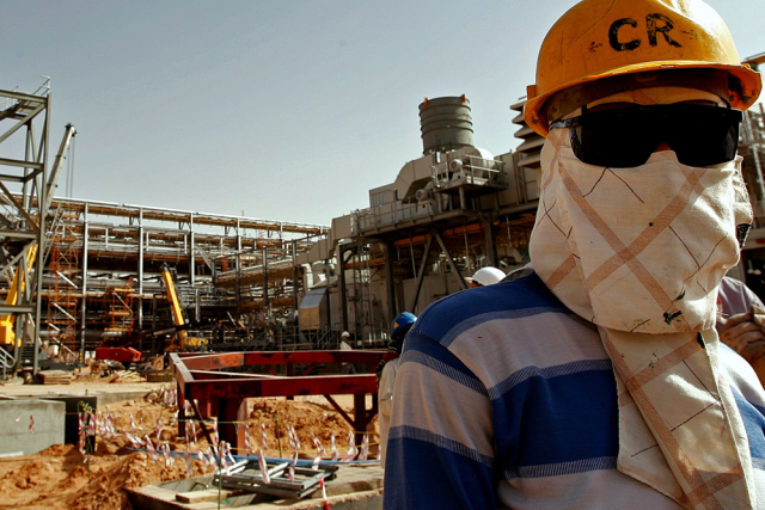
DUBAI/MUMBAI — Saudi Aramco is planning a blockbuster investment in Reliance Industries, the Indian conglomerate said on Monday, as the Saudi energy giant diversifies its business, where weaker oil prices cut its first-half profit by 12 per cent.
In preparation for what could be the world’s largest initial public offering (IPO), state-run Aramco began publishing its results this year as it also started issuing international bonds. The world’s top oil producer plans to launch an IPO by 2020-2021, having postponed its flotation from last year.
Aramco signed a letter of intent to take a 20 per cent stake in Reliance’s oil-to-chemicals business in one of the largest ever foreign investments in India, Reliance said.
While terms of the deal are yet to be finalized, Reliance will get roughly US$15 billion, including some debt adjustments for the 20 per cent stake, P.M.S. Prasad, Executive Director of Reliance Industries said on Monday, adding the two companies aim to close the deal by March 2020.
Aramco is expanding its downstream, or refining, chemicals and marketing, footprint globally by signing new deals and boosting the capacity of its plants to secure new markets for its crude and reduce its risk to any downturn in oil demand.
For years, Aramco has been a regular crude supplier to Indian refiners via long-term crude contracts.
And while it owned stakes in refineries or storage assets in other key Asia markets such as China, Japan and South Korea as well as in the United States where it owns Motiva, the largest refinery in the U.S., it has not secured that same access in India, a fast-growing market for fuel and petrochemicals.
Reliance’s Prasad reporters on Monday the deal will see Reliance buy up to 500,000 barrels a day of crude oil from Aramco, which would more than double the current volumes that Reliance buys now.
A source familiar with the talks said the potential deal would help Aramco boost its crude supply to Reliance by more than 50 per cent.
“This signifies perfect synergy between the world’s largest oil producer and the world’s largest integrated refinery and petrochemicals complex,” said Reliance Chairman Mukesh Ambani, while announcing the deal in Mumbai on Monday.
Ambani, who is Asia’s richest man, said the deal would be the biggest foreign investment in the history of Reliance and also one of the largest foreign investments ever in India.
Profit Decline
Aramco, which declined to comment on the Indian deal, reported a net profit of US$46.9 billion in the first half of 2019, down from US$53 billion for the same period last year. Despite the profit decline, Aramco remained the world’s most profitable company.
By comparison, Apple Inc, the world’s most profitable listed company, made US$31.5 billion, U.S. rival Exxon Mobil Corp. around US$5.5 billion and Royal Dutch Shell some US$8.8 billion.
“Despite lower oil prices during the first half of 2019, we continued to deliver solid earnings and strong free cash flow underpinned by our consistent operational performance, cost management an fiscal discipline,” CEO Amin Nasser said in a statement.
Aramco has been boosting investment in refining and petrochemicals, with the aim of almost tripling its chemicals production to 34 million tonnes per year by 2030 and raising its global refining capacity to 8-10 million barrels per day (bpd) from more than 5 million bpd.
The company has also been involved in most of the kingdom’s high-profile deals in the last two years announcing at least US$50 billion worth of investments in Saudi Arabia, Asia and the United States.
The Reliance deal with Aramco will cover all of Reliance’s refining and petrochemical assets, along with its majority stake in its petroleum retail joint venture.
Last week, British oil major BP said it was forging a fuel retailing venture with Reliance, with the Indian company owning a 51 per cent stake.
Aramco’s deals show how Riyadh wants to ensure it would be the last oil producer left standing when future demand for crude slows, officials say, and with a cost of production around US$4 a barrel, Aramco hardly has any competitors.
The company generated total half-year revenue, including other income related to sales, of US$163.88 billion, down from US$167.68 billion a year earlier. Free cash flow rose 6.7 per cent to US$38 billion.
Aramco said the drop in earnings was mainly due to a 4 per cent fall in the average realized price of crude oil to US$66 from US$69 per barrel and an increase in purchases, producing and manufacturing costs, and depreciation and amortization costs.
The drop was partially offset by a decrease of US$2.62 billion in income taxes, the company said.
Aramco said it will maintain its position as of the world’s biggest crude producer and would continue to expand its gas output and sustain its strong financial position.
“Our financials are strong and we will continue to invest for future growth,” CEO Nasser said.
Planned IPO
Aramco’s planned IPO is the centerpiece of Saudi Arabia’s economic transformation drive to attract foreign investment and diversify away from oil.
Work on the IPO was halted in 2018 when Aramco shifted its attention to the acquisition of a 70 per cent stake in petrochemicals maker Saudi Basic Industries Corp.
Aramco also paid a dividend of US$46.4 billion to the government including a special dividend of US$20 billion, up from US$32 billion a year earlier.
This reflects Saudi Arabia’s heavy dependence on the oil company to finance the kingdom’s budget needs as well as the lavish lifestyles of its royal family.
© Thomson Reuters 2019
You can read more of the news on source
